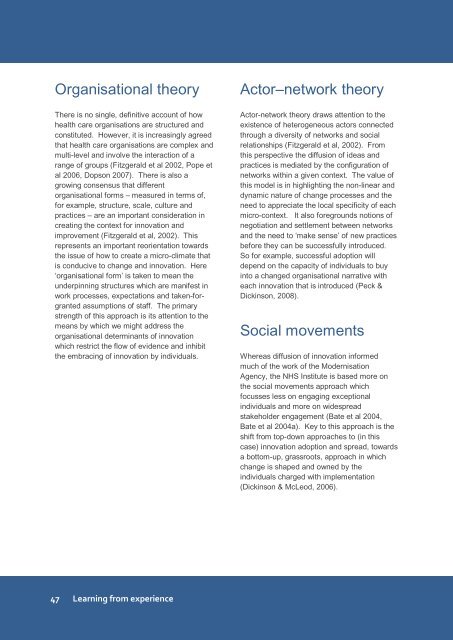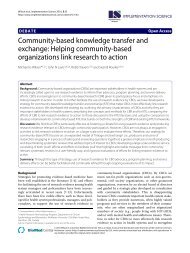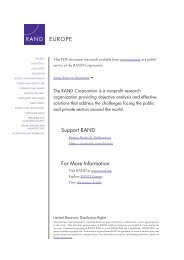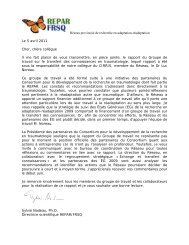Promoting and Embedding Innovation
Promoting and Embedding Innovation
Promoting and Embedding Innovation
You also want an ePaper? Increase the reach of your titles
YUMPU automatically turns print PDFs into web optimized ePapers that Google loves.
Organisational theory<br />
There is no single, definitive account of how<br />
health care organisations are structured <strong>and</strong><br />
constituted. However, it is increasingly agreed<br />
that health care organisations are complex <strong>and</strong><br />
multi-level <strong>and</strong> involve the interaction of a<br />
range of groups (Fitzgerald et al 2002, Pope et<br />
al 2006, Dopson 2007). There is also a<br />
growing consensus that different<br />
organisational forms – measured in terms of,<br />
for example, structure, scale, culture <strong>and</strong><br />
practices – are an important consideration in<br />
creating the context for innovation <strong>and</strong><br />
improvement (Fitzgerald et al, 2002). This<br />
represents an important reorientation towards<br />
the issue of how to create a micro-climate that<br />
is conducive to change <strong>and</strong> innovation. Here<br />
„organisational form‟ is taken to mean the<br />
underpinning structures which are manifest in<br />
work processes, expectations <strong>and</strong> taken-forgranted<br />
assumptions of staff. The primary<br />
strength of this approach is its attention to the<br />
means by which we might address the<br />
organisational determinants of innovation<br />
which restrict the flow of evidence <strong>and</strong> inhibit<br />
the embracing of innovation by individuals.<br />
Actor–network theory<br />
Actor-network theory draws attention to the<br />
existence of heterogeneous actors connected<br />
through a diversity of networks <strong>and</strong> social<br />
relationships (Fitzgerald et al, 2002). From<br />
this perspective the diffusion of ideas <strong>and</strong><br />
practices is mediated by the configuration of<br />
networks within a given context. The value of<br />
this model is in highlighting the non-linear <strong>and</strong><br />
dynamic nature of change processes <strong>and</strong> the<br />
need to appreciate the local specificity of each<br />
micro-context. It also foregrounds notions of<br />
negotiation <strong>and</strong> settlement between networks<br />
<strong>and</strong> the need to „make sense‟ of new practices<br />
before they can be successfully introduced.<br />
So for example, successful adoption will<br />
depend on the capacity of individuals to buy<br />
into a changed organisational narrative with<br />
each innovation that is introduced (Peck &<br />
Dickinson, 2008).<br />
Social movements<br />
Whereas diffusion of innovation informed<br />
much of the work of the Modernisation<br />
Agency, the NHS Institute is based more on<br />
the social movements approach which<br />
focusses less on engaging exceptional<br />
individuals <strong>and</strong> more on widespread<br />
stakeholder engagement (Bate et al 2004,<br />
Bate et al 2004a). Key to this approach is the<br />
shift from top-down approaches to (in this<br />
case) innovation adoption <strong>and</strong> spread, towards<br />
a bottom-up, grassroots, approach in which<br />
change is shaped <strong>and</strong> owned by the<br />
individuals charged with implementation<br />
(Dickinson & McLeod, 2006).<br />
47 Learning from experience
















